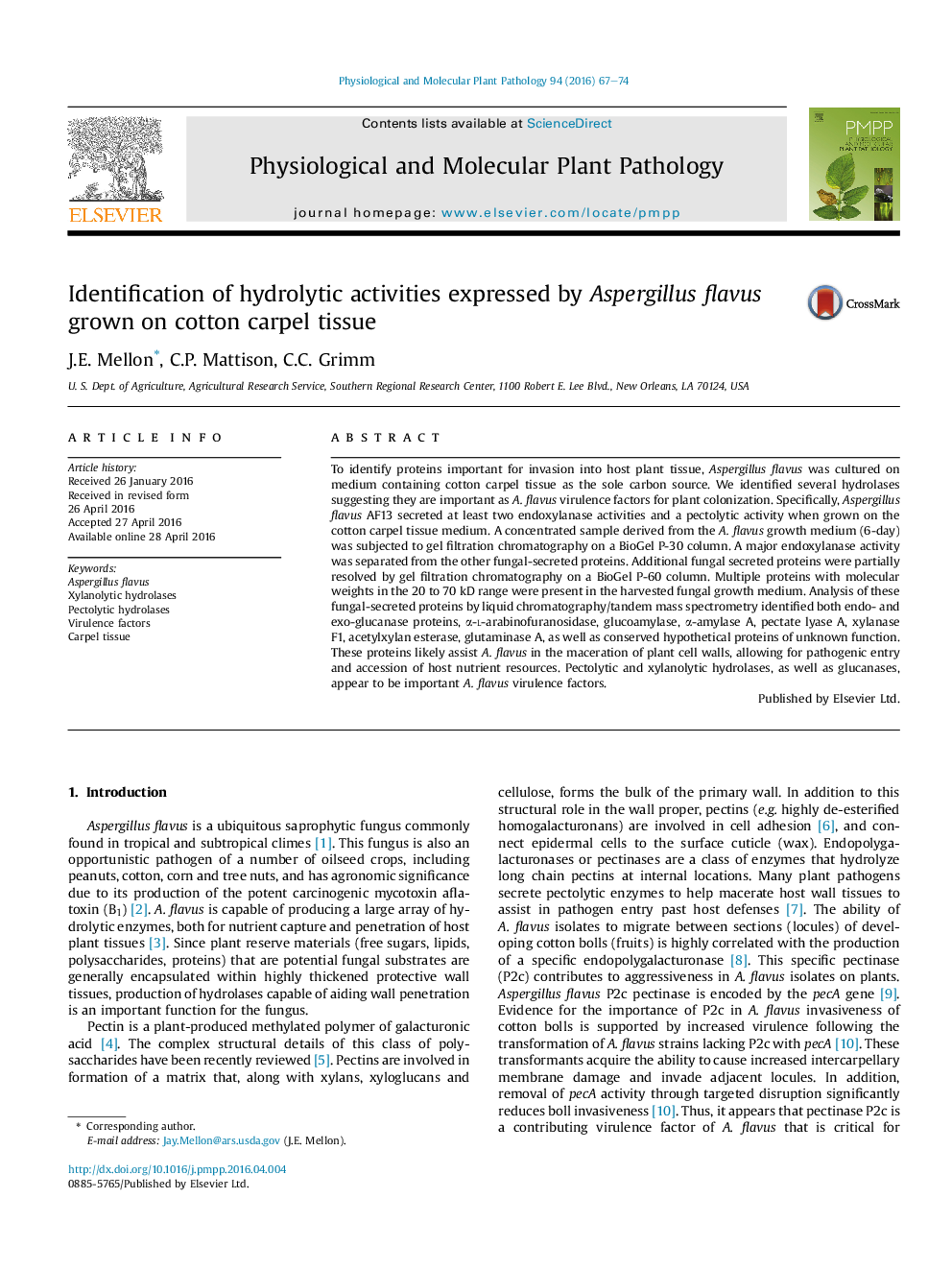| Article ID | Journal | Published Year | Pages | File Type |
|---|---|---|---|---|
| 2836198 | Physiological and Molecular Plant Pathology | 2016 | 8 Pages |
•Multiple classes of fungal hydrolases identified.•Fungal hydrolases identified from Aspergillus flavus cotton carpel medium.•Xylanolytic and pectolytic activities identified.•Glucanase, xylanolytic and pectinolytic hydrolases may aid fungal penetration of host defenses.
To identify proteins important for invasion into host plant tissue, Aspergillus flavus was cultured on medium containing cotton carpel tissue as the sole carbon source. We identified several hydrolases suggesting they are important as A. flavus virulence factors for plant colonization. Specifically, Aspergillus flavus AF13 secreted at least two endoxylanase activities and a pectolytic activity when grown on the cotton carpel tissue medium. A concentrated sample derived from the A. flavus growth medium (6-day) was subjected to gel filtration chromatography on a BioGel P-30 column. A major endoxylanase activity was separated from the other fungal-secreted proteins. Additional fungal secreted proteins were partially resolved by gel filtration chromatography on a BioGel P-60 column. Multiple proteins with molecular weights in the 20 to 70 kD range were present in the harvested fungal growth medium. Analysis of these fungal-secreted proteins by liquid chromatography/tandem mass spectrometry identified both endo- and exo-glucanase proteins, α-l-arabinofuranosidase, glucoamylase, α-amylase A, pectate lyase A, xylanase F1, acetylxylan esterase, glutaminase A, as well as conserved hypothetical proteins of unknown function. These proteins likely assist A. flavus in the maceration of plant cell walls, allowing for pathogenic entry and accession of host nutrient resources. Pectolytic and xylanolytic hydrolases, as well as glucanases, appear to be important A. flavus virulence factors.
